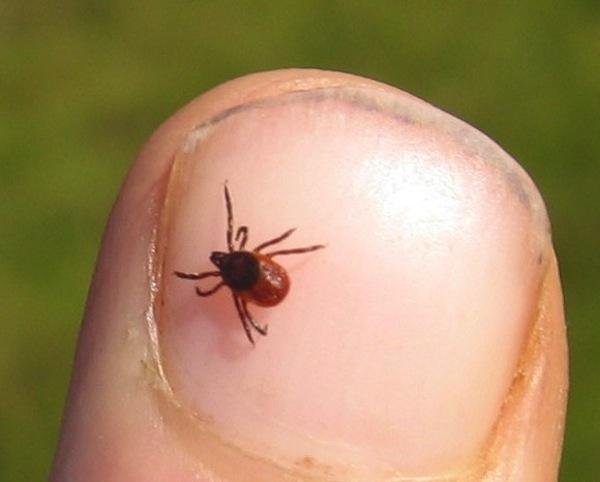An adult blacklegged ticks, also known as a deer tick. (CC/Stuart Meek)
Preliminary research results presented at a conference in Boston show the number of Lyme disease cases diagnosed in the U.S. to be some 300,000 -- ten times what was previously reported.
"This new preliminary estimate confirms that Lyme disease is a tremendous public health problem in the United States, and clearly highlights the urgent need for prevention," said Paul Mead, chief of epidemiology and surveillance for the Centers for Disease Control Lyme disease program.
Lyme disease is under surveillance nationally because it was made a "notifiable condition" in 1991. Each year, more than 30,000 cases of Lyme disease are reported to the CDC, making it the most commonly reported tick-borne illness in the U.S.
When a doctor diagnoses Lyme disease, that case is to be reported to state health officials, who in turn report to the CDC. But CDC officials knew they weren't getting the full story.
"We know that routine surveillance only gives us part of the picture, and that the true number of illnesses is much greater," Mead said.
Reported cases were concentrated only in the Northeast and upper Midwest, with 96 percent of cases in 13 states.
Based on analyses of medical claims information for some 22 million people insured annually for six years, a survey of clinical laboratories, and self-reported Lyme disease cases from a survey of the general public, the data show approximately 300,000 cases annually.
"We know people can prevent tick bites through steps like using repellents and tick checks. Although these measures are effective, they aren’t fail-proof and people don’t always use them," said Lyle Petersen, director of CDC’s Division of Vector-Borne Diseases.
Humans contract Lyme disease, caused by the bacterium Borrelia burgdorferi, through the bite of infected blacklegged ticks, also known as deer ticks. Symptoms include fever, fatigue and a skin rash before the untreated infection spreads to joints, the heart and the nervous system.
"We need to move to a broader approach to tick reduction, involving entire communities, to combat this public health problem," Petersen said.







